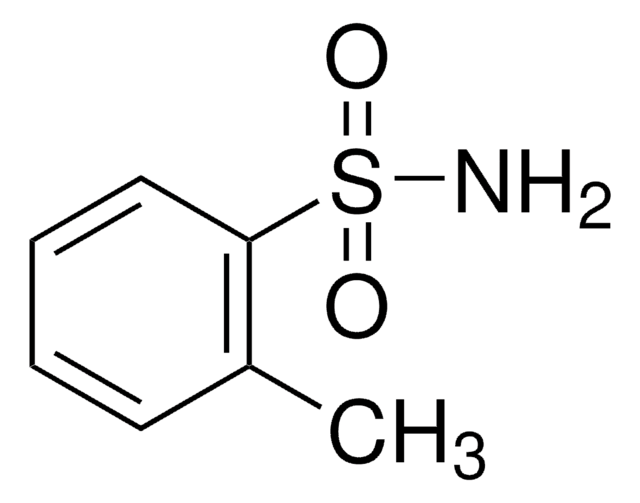16398
Elektrolytlösung
nonaqueous, LiCl in ethanol (saturated)
Synonym(e):
Lithiumchlorid -Lösung
Anmeldenzur Ansicht organisationsspezifischer und vertraglich vereinbarter Preise
Alle Fotos(1)
About This Item
Lineare Formel:
LiCl
CAS-Nummer:
Molekulargewicht:
42.39
MDL-Nummer:
UNSPSC-Code:
26111700
PubChem Substanz-ID:
Empfohlene Produkte
Form
liquid
Qualitätsniveau
Qualität
nonaqueous
Konzentration
LiCl in ethanol (saturated)
SMILES String
[Li+].[Cl-]
InChI
1S/ClH.Li/h1H;/q;+1/p-1
InChIKey
KWGKDLIKAYFUFQ-UHFFFAOYSA-M
Suchen Sie nach ähnlichen Produkten? Aufrufen Leitfaden zum Produktvergleich
Verwandte Kategorien
Allgemeine Beschreibung
Finden Sie mehr Informationen auf unserem Sensor-Applikations-Portal.
Anwendung
Lithiumchloridlösung (Elektrolytlösung) dient als Fülllösung für Referenzelektroden, die hauptsächlich bei der Titration nichtwässriger Lösungen verwendet werden. Sie wurde zur Bestimmung von Erdalkalimetallen in Solen mittels Chelat-Ionenchromatographie auf einer mit Iminodiessigsäure gebundenen Kieselgelsäule eingesetzt. Sie kann auch zusammen mit N,N-Dimethylacetamid (DMAC) für die Größenausschlusschromatographie-Analyse von Cellulose verwendet werden.
Signalwort
Danger
H-Sätze
Gefahreneinstufungen
Eye Irrit. 2 - Flam. Liq. 2 - Skin Irrit. 2
Lagerklassenschlüssel
3 - Flammable liquids
WGK
WGK 1
Flammpunkt (°F)
53.6 °F
Flammpunkt (°C)
12 °C
Persönliche Schutzausrüstung
Eyeshields, Faceshields, Gloves, type ABEK (EN14387) respirator filter
Choose from one of the most recent versions:
Besitzen Sie dieses Produkt bereits?
In der Dokumentenbibliothek finden Sie die Dokumentation zu den Produkten, die Sie kürzlich erworben haben.
Kunden haben sich ebenfalls angesehen
Determination of trace alkaline earth metals in brines using chelation ion chromatography with an iminodiacetic acid bonded silica column.
Washim B and Paull B.
Journal of Chromatography A, 907 (1), 191-200 (2001)
Size exclusion chromatography of cellulose in LiCl/N, N-dimethylacetamide.
Matija S and Kolar J.
Journal of Biochemical and Biophysical Methods, 56 (1), 265-279 (2003)
Karla M Acevedo et al.
The Journal of biological chemistry, 289(16), 11007-11019 (2014-03-13)
Amyloid precursor protein (APP) undergoes post-translational modification, including O- and N-glycosylation, ubiquitination, and phosphorylation as it traffics through the secretory pathway. We have previously reported that copper promotes a change in the cellular localization of APP. We now report that
Na An et al.
Proceedings of the National Academy of Sciences of the United States of America, 111(40), 14325-14331 (2014-09-17)
Human telomeric DNA consists of tandem repeats of the sequence 5'-TTAGGG-3' that can fold into various G-quadruplexes, including the hybrid, basket, and propeller folds. In this report, we demonstrate use of the α-hemolysin ion channel to analyze these subtle topological
Ted M Hsu et al.
Neuropsychopharmacology : official publication of the American College of Neuropsychopharmacology, 40(2), 327-337 (2014-07-19)
Glucagon-like peptide-1 (GLP-1) is produced in the small intestines and in nucleus tractus solitarius (NTS) neurons. Activation of central GLP-1 receptors (GLP-1Rs) reduces feeding and body weight. The neural circuits mediating these effects are only partially understood. Here we investigate
Unser Team von Wissenschaftlern verfügt über Erfahrung in allen Forschungsbereichen einschließlich Life Science, Materialwissenschaften, chemischer Synthese, Chromatographie, Analytik und vielen mehr..
Setzen Sie sich mit dem technischen Dienst in Verbindung.







